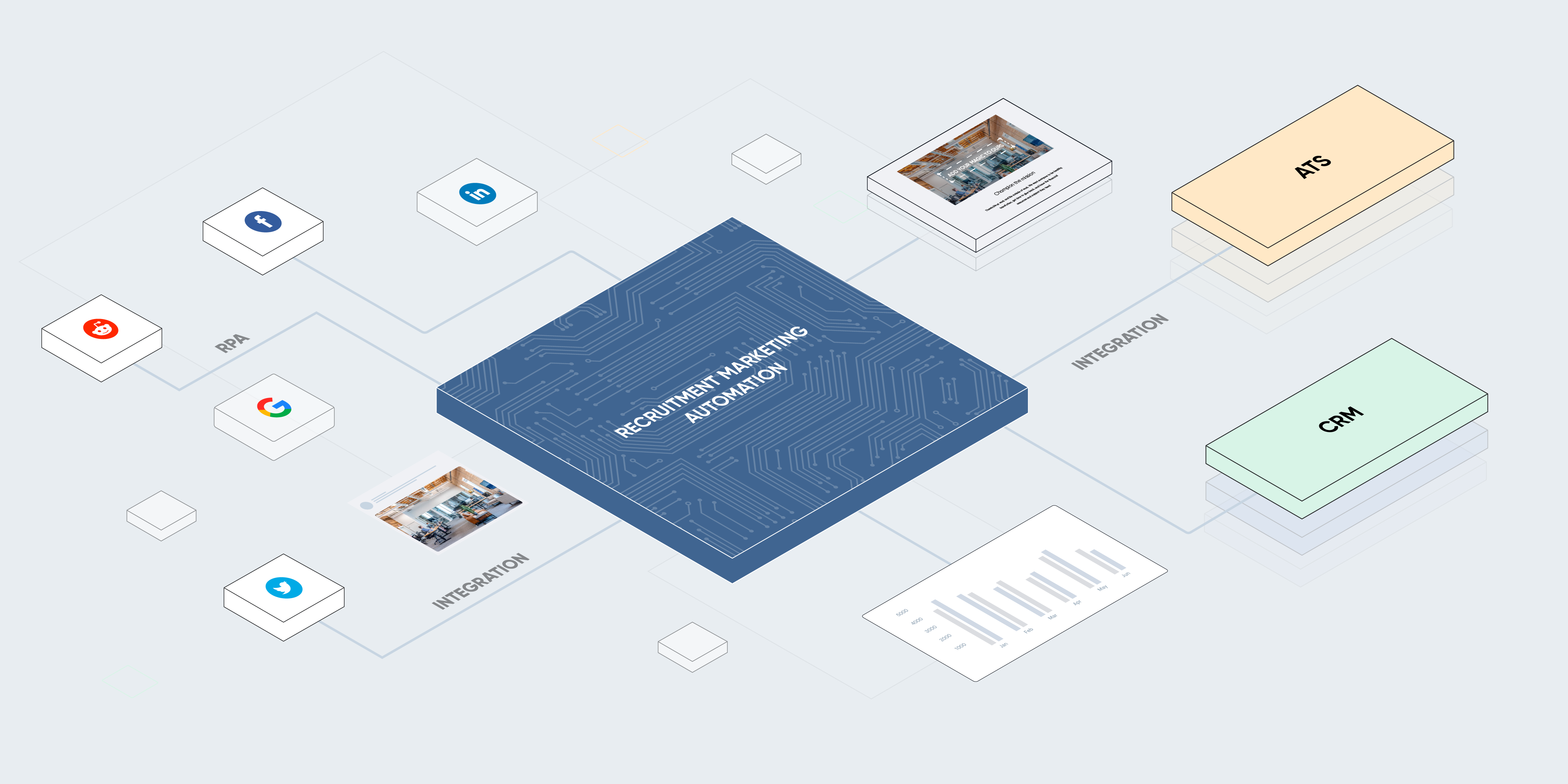Consider the following hypothetical: your small business is in the middle of a major hiring push and suddenly your lead hiring manager is taken ill and will be unable to perform her job for a matter of weeks or months. What structures or tools would need to be in place to prevent your recruitment efforts from screeching to a halt in the face a catastrophe of this sort? What would make it easier to continue ongoing employer branding efforts on social media and other platforms? How the would the interim hiring manager turn position profiles stored in the company's ATS into online recruiting strategies that are consistent with existing efforts? Simply put, the most straightforward answer is recruitment marketing automation.
Anyone who has spent time in or around the world of marketing has likely heard the term “marketing automation.” One could even accuse it of being a buzzword. But what, exactly, is recruitment marketing automation, and how does it differ from traditional marketing automation? Read on to find out.
Marketing Automation Reimagined
Hubspot describes marketing automation as the use of software to streamline or automate repetitive marketing tasks (e.g. posting to social media), in order to “nurture prospects with highly personalized, useful content that helps convert prospects to customers and turn customers into delighted customers. This type of marketing automation typically generates significant new revenue for companies, and provides an excellent return on the investment required.” Recruitment marketing automation, then, follows essentially the same principles, but specifically regarding the promotion of an employer brand in order to attract suitable job candidates and build a strong talent pipeline. This might involve utilizing software that automatically distributes job listings and other branding material across social media platforms, creates templates for formatting and reformatting content in order to streamline that process, instantaneously tracking ad views, clicks, and applications received, as well as other tasks that would otherwise take up valuable person hours.
While the examples above are largely the same sorts of tasks that might be relegated to traditional marketing automation, recruitment marketing automation does have some key differences in terms of IT integration. Where traditional marketing automation software might integrate with various marketing platforms, high quality recruitment marketing automation software should be able to integrate with a given company’s applicant tracking system (ATS) in order to further reduce tedious manual tasks. Importing job titles and descriptions for positions that need to be filled, for instance, helps ensure cohesion across disparate platforms while saving time and labor. In this way, automation tools leave hiring managers and other HR workers free to concentrate on crafting a strong employer brand and interfacing meaningfully with candidates.
A New Outlook on Recruitment
At this point you may be wondering if a reduction in manual labor is the only key value proposition for the automation tools under discussion. While it’s true that these time-saving effects can help significantly bolster the efficiency, and stretch the budget, of a team of recruiters (especially crucial when you realize that more than half of HR teams will see an increased application load from one year to the next), a large proportion of the value to be found in these types of solutions comes from changing the way that we think of and approach recruitment. With a more traditional recruitment marketing setup, companies are encouraged to seek out job candidates on an ad hoc basis, putting out ads and messaging only when there is a particular position that needs to be filled immediately. When some of these processes are automated, however, it’s possible to think not just in terms of filling particular positions, but in terms of building a robust talent pipeline via continuous marketing.
Just think of it: if continuing your employer branding efforts were as simple as pressing a button, what would stop you from ensuring that a steady stream of messaging reached potential candidates at all stages of the candidate’s journey? Not only is this an effective means of reaching the 80% of candidates who are not actively job searching (but would be willing to change jobs if the right offer came along) at any given time, it’s a way to convey your employee value proposition (EVP) to a large audience, causing future candidates who have seen your messaging to associate your company with a particular set of values and ideas that may potentially align with their own. Meanwhile, the very same automation workflows that make this change of mindset possible can also contribute to its optimization by helping to target ads at the right demographics or offering a streamlined process for creating job landing pages. Considering that potentially more than 50% of applicants drop out of the recruitment process before completing the initial application, it’s easy to see the value that workflows like these can have.
Remaining Challenges
While recruitment marketing automation can be an extremely valuable tool, it’s not an across the board cure-all for recruitment and hiring processes. It’s still imperative that businesses develop and refine an EVP that attracts high quality candidates, and that they commit to building a sustainable recruitment marketing machine that promotes a robust talent pipeline. That said, even these tasks that fall outside the purview of automation can still be made easier and more effective by anything that gives valuable time back to the HR workers who would otherwise be stuck in a world of drudgery and administrivia. Whether they spend that time meeting the challenges that come after the automation has done its part is up to them, but, in the meantime, automation can help to reshape these challenges around sustained, future success.







